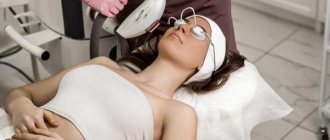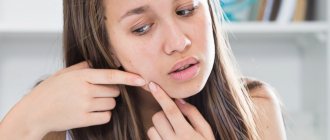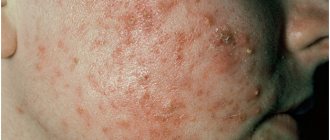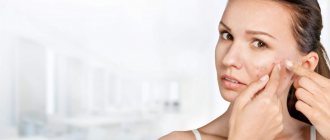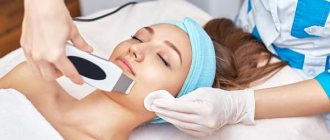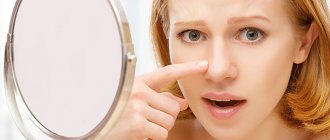From this article you will learn:
- Causes of foot hyperkeratosis
- Treatment of hyperkeratosis of the skin of the feet at home
- Treatment of hyperkeratosis of the skin of the feet in the podiatrist’s office
- Treatment of hyperkeratosis of the skin of the feet with medications
- Hardware treatment of foot hyperkeratosis
- Effective prevention of foot hyperkeratosis
Hyperkeratosis of the feet is excessive keratinization and thickening of the epidermis in the sole area. As a result, the skin becomes rough and dry, calluses and even bleeding cracks may appear. That is why such a pathological process applies not only to cosmetic problems.
If you are also familiar with this condition of the dermis, which makes it difficult to wear light sandals and flip-flops in the summer heat, you may want to pay extra attention to your feet. The disease can be diagnosed by a podologist, dermatologist or orthopedist. But you will learn about methods of treatment and prevention of hyperkeratosis of the feet from our article.
Follicular hyperkeratosis: symptoms
Follicular hyperkeratosis is a medical term, popularly known as “goose bumps”. This is a condition in which the following symptoms appear:
- roughness and roughness of the skin;
- dryness;
- the formation of small beige, pink or red nodules.
This dermatitis is based on thickening of the stratum corneum and impaired exfoliation of keratinized epithelial cells. Due to the fact that the stratum corneum grows and the scales clog the pores, tubercles appear. This leads to the skin becoming covered with microcomedones.
Effective prevention of foot hyperkeratosis
Most often, hyperkeratosis of the feet occurs as a result of the development of other disorders existing in the body. Therefore, the main preventive measure is their timely detection and treatment.
In order not to encounter hyperkeratosis of the feet in life or to prevent its relapse, it is necessary to exclude factors that provoke this disease:
- You need to choose the right shoes, especially those that are intended for daily wear. It should be the right size, not put pressure on the foot, and also be comfortable.
- If your work requires you to be on your feet all day (standing or moving), you can contact an orthopedic salon, where they will make insoles according to individual measurements.
- Avoid the formation of a hard keratinized layer, as well as its growth to critical sizes. Proper foot hygiene will help with this, which consists of regular washing and exfoliation of the feet.
- If you have diseases that cause metabolic disorders, it is necessary to choose certain care products that do not injure the skin, as well as specialized medications.
- It is also important to constantly visit your doctor and follow all the recommendations he gives.
If hyperkeratosis of the feet has gone too far, you need to consult a podiatrist, since it is unlikely that you will be able to cope with this problem on your own. Only he can prescribe effective treatment.
It must be remembered that hyperkeratosis of the feet is not always an exclusively cosmetic defect. In some cases, it can indicate the presence of disorders in the body related to the functioning of internal organs, and can also lead to quite serious complications. To treat this disease, various methods can be used, including the use of medications, folk remedies or hardware procedures.
Nowadays, you no longer have to spend a lot of time performing complex and unpleasant procedures at home. It is much easier to seek help from real professionals - the Veronika Herba beauty and health center, equipped with effective and modern equipment.
Why clients choose Veronika Herba Beauty and Health Center:
- This is a beauty center where you can undergo treatment for hyperkeratosis of the feet at a reasonable cost, and you will be treated by one of the best specialists in Moscow. This is a completely different, higher level of service!
- You can receive qualified help at any time convenient for you. The beauty center is open from 9:00 to 21:00, seven days a week. The main thing is to agree with your doctor in advance on the date and time of your appointment.
Sign up for a consultation with a specialist by phone +7 (495) 085-15-13
, and you will see for yourself!
How does follicular hyperkeratosis develop?
It is considered normal that when the lumen of the follicular canal contains a thin layer of corneocytes, its rejection occurs quite easily. But if microcomedones form - blockage of the follicles - this process slows down. Impaired desquamation can lead to retention hyperkeratosis, the formation of dense plugs of keratin, sebum and bacteria in the orifices.41
The structure of the follicle suggests the presence of an acroinfundibulum (its upper part) and an infrainfundibulum. With hyperkeratosis of the first, open comedones are formed, when increased keratinization concerns the second - closed comedones. 41
In closed comedones, the level of oxygenation is very low, and the drainage of metabolites of propionibacteria and sebum is blocked. The dark color of open comedones is associated with the accumulation of melanin. 41
Causes of follicular hyperkeratosis on the face
Scientists cannot yet say unequivocally what is the initiator of increased proliferation of keratinocytes and their adhesion, but it is assumed that the following factors may have an influence41:
- decrease in linoleic acid levels;
- androgens;
- increased interleukin-1 activity.
If we compare epidermal and follicular keratinocytes, then in the latter 17-HSD and 5 reductase are more active. This leads to an increase in DHT in the body, and it is one of the main initiators of the proliferation of keratinocytes and an increase in sebum production. 41
Linoleic acid regulates the proliferation of follicular keratinocytes. With acne, its level drops significantly, which can cause an increase in the proliferation of follicular keratinocytes and the synthesis of pro-inflammatory cytokines. 41
Reasons for appearance
The exact causes of the disease have not yet been established. The main one is regular exposure to ultraviolet radiation. It affects the dermis, epidermal layers, blood vessels, sebaceous glands, and melonocytes.
Gradually, under the influence of sunlight, the disturbances increase, reaching the peak of the disease.
The following factors contribute to the development of pathology:
- genetic predisposition;
- weakened immune system;
- influence on the skin of chemicals (resinous substances, oil, sand, etc.);
- past infections;
- age-related changes (the disease most often affects people over 50 years of age).
Due to weak immunity, AIDS carriers, people with problems with the nervous and endocrine systems, as well as patients who have undergone chemotherapy or complex operations are more prone to the appearance of keratosis.
Some types of keratoses often affect young people. This usually applies to red-haired or fair-haired people with gray, blue or green eyes. Research shows that by the age of 40, 60% of the population has at least one element of keratosis.
Over the age of 80, everyone has some type of this pathology.
Follicular hyperkeratosis: treatment
It is impossible to get rid of follicular hyperkeratosis once and for all, as it is a chronic condition. However, it does not require and does not have specific treatment. Nevertheless, follicular keratosis is one of the links in the pathogenesis of acne, a common dermatological disease. You can reduce the appearance of goose bumps by including the following products in your care256:
- Acid peels. To combat follicular hyperkeratosis, it is necessary to include in your care products with lactic, salicylic, and citric acids, which help exfoliate dead skin particles. This will help make the surface of the skin smoother and also softer.
- Products with urea. Urea perfectly moisturizes the skin. Products with it can be used throughout the body. But it is important to take into account its percentage in a cosmetic product: at 10% it acts as a moisturizer, at 20-50% it acts as a keratolytic. If the concentration is 50% or more, the product can only be used on rough skin, for example, for calluses and corns, but for other areas, including hyperkeratosis of the facial skin, it is not suitable.
- Products with retinol. This component, unlike urea and acid peels, does not cause exfoliation. Retinol does not react to dead horny scales, but to living cells of the basal layer of the skin. Under its action, they divide faster and move towards the epidermis, pushing out the dead cells located on top, which is expressed in the form of peeling.
Also, for acne, hardware or injection procedures can be used to eliminate follicular hyperkeratosis. They should be selected by a specialist.
or leave a comment
film “The Beginning” 2010
Case from practice
A 36-year-old patient came to us for consultation with complaints of papules on the skin of the extensor surfaces of the arms. Papules the size of a pinhead were located symmetrically, surrounding the hair shaft. On superficial palpation of the affected areas of the skin, a “grating” sensation occurred, which is a consequence of a large number of nodules (hyperkeratosis of the mouths of the pilosebaceous follicles). The rash was periodically accompanied by intermittent itching.
The patient independently applied emollient emollients and treated the affected areas of the skin with a hard washcloth. Such treatment brought only temporary improvement, and horny papules formed again within a week.
We asked the patient: did she have similar symptoms before? The patient could not immediately remember. We asked her the following leading questions.
- Did she have similar rashes before at birth, in childhood, in adolescence?
- Are they related to food intake or medications?
- Have similar symptoms occurred in relatives?
As a result, we were able to find out that at the age of 13–14 she already had similar problems, but she did not consult a doctor. By about age 17, the rashes stopped. Clinical manifestations and disease history allowed us to make a more accurate diagnosis and immediately exclude:
- epidermodysplasia verruciformis;
- acrokeratosis verruciformis;
- pigmentary and papillary dystrophy of the skin;
- ichthyosis.
According to clinical signs and history, a diagnosis of keratosis pilaris was made.
Appointments
The following prescriptions were made to the patient.
- Apply externally a keratolytic ointment containing 30% urea - Uroderm once a day in the morning for 2 weeks.
Urea
is a natural moisturizer, it is formed in the body, has metabolic pathways, has a keratolytic effect, softens and moisturizes the skin, and increases its elasticity.
- Apply Radevit® Active ointment externally once a day in the evenings for 2 weeks and then 2 times a day for another 2 weeks.
Radevit® Active
with vitamins A, D, E is a combined drug that has anti-inflammatory, softening, moisturizing, reparative and antipruritic effects, normalizes keratinization processes, and enhances the protective function of the skin.
- Use Retinol palmitate daily orally at a dose of 10 thousand IU/kg body weight per day for 1 month, but not more than 600 thousand IU for 1–1.5 months.
Retinol palmitate
is a natural metabolite in the body and affects the etiopathogenesis of the disease, increasing the proliferation of basal keratinocytes, and is involved in the rejuvenation of the cell population, inhibition of differentiation and reduction of keratinization.
Result
A month later, a re-examination of the patient showed a good stable result, expressed in regression of the main signs of keratosis pilaris. The patient's skin became smooth, and she herself was pleased with the result. We recommended that she continue to undergo therapy according to the proposed regimen at least 2 times a year.
Patients will thank you!
Anna Vyacheslavovna Karpova, Ph.D. honey. Sciences, dermatovenerologist, cosmetologist, associate professor of the Department of Aesthetic Medicine of the Federal Medical Education and Science Institute of the People's Friendship University of Russia
or leave a comment
Julia
|
27.10.2021 13:30
Hello! please tell me, a 2-year-old child with a rash on his legs and arms, the dermatologist diagnosed phallicular keratosis, did not prescribe treatment, said that it cannot be treated, I really want to help my baby, maybe you can help with the treatment, maybe you have online consultations? Is it possible to smear with radevit and uroderm?Hello Julia! Ointment Radevit® Active 2 times a day – 14 days.
Anna
|
18.10.2021 11:48
Hello, we are one year and 9 months old and the doctor told us that we have keratosis, how to treat it?Hello Anna! Please clarify what kind of keratosis you have and have you been to a dermatologist?
Elena
|
17.08.2021 11:52
Hello, Anna Vyacheslavovna, my daughter has had a problem since she was 7 years old with a rash on her face, keratosis pilaris, on my arms and legs, but she got it on her face. I have a question, how to treat it? And what is broken inside, could it be the pancreas or the gall bladder?Hello, Elena! Taking into account childhood and hereditary predisposition, an in-person consultation with a dermatologist is necessary.
Alyona
|
14.08.2021 02:50
Good afternoon, Anna! After giving birth, the skin on my back felt like sandpaper. There are like spines in every pore. There is no inflammation, the skin is dry to the touch, visually, each pore with an elevation in it is visible (goose bumps). Please tell me if it makes sense to do something while breastfeeding? Or it will go away on its own. Previously, there was no hyperkeratosis; on the contrary, the skin was always very smooth and elastic. During pregnancy and lactation, I periodically take a complex of vitamins orally (calcium + D3; vitamin C + Zn, group of all B vitamins (including folic), strong) I do not take vitamin A yet. Thank you for your answerHello, Alena! We recommend using UrocrEM 10% ointment after showering. The ointment has a mild keratolytic effect. If the clinical picture does not change, we recommend that you consult a dermatologist in person.
Ksyusha
|
07.08.2021 10:04
I really liked the presentation and clarity, your approach - that you need to not only “smear on” I have been suffering from this problem since I was 15 years old (now 33) - I treated everything that could cause problems with the skin - endocrine, gastrointestinal tract... but not so long ago I found a dersatologist who clearly he said what it was like without prescribing expensive tests and medications. The doctor also called the drug a retinoid (I didn’t remember the name). Seeing that I had cancer (2 years ago a lobe of the thyroid gland was removed, papillary cancer, stage 1), she canceled it and said no way The trouble is that local prescribed remedies do not have an effect - mirrorin and ur-10. I am interested in your opinion on this question, as a doctor who practices treating such issues. Thank you for your answer!Hello, Ksenia! If you have a history of cancer, the use of retinoids is not recommended. To make a more accurate diagnosis and prescribe treatment, an in-person consultation with a dermatologist is necessary.
Hello doctor, my daughter has follicular hyperkeratosis
|
25.07.2021 06:43
Hello doctor, my daughter has follicular hyperkeratosis; many doctors have used ointments, but there is no effect. Nodules appear and painful rashes increase. Can your treatment be applied to this recommended patient? thank youHello! Please write to [email protected]
Arthur
|
13.07.2021 00:15
Hello, I have all the symptoms of keratosis pilaris, namely “goose bumps”, pimples on the forearms, when you squeeze them out, contents that resemble sebum come out, as with a closed comedon. These “points” were a little inflamed, I decided to correct this situation, having figured it out in my opinion, I decided to buy Uroderm 30% and Radevit Active (Uroderm in the morning, Radevit in the evening). I was very badly covered, these same pimples become inflamed in huge numbers, the skin is now covered in pimples, and they immediately become white pus on the surface. Please tell me, is this a normal reaction? There is no way to see a doctor in the near future. Should I continue treatment (if you can call it that) or not?Hello Arthur! As a rule, the ointments you use do not give such a reaction. We strongly recommend that you stop therapy and consult a specialist to make an accurate diagnosis and prescribe appropriate treatment.
Valentina
|
24.06.2021 14:35
Anna Vyacheslavovna, hello. Please help me calculate how many drops of retinol palmitate are needed for a weight of 48 kg. I can't figure out the calculations. Thank you.Hello, Valentina! On average, we calculate one drop per kilogram of body weight per day. In summer we use sunscreen.
Natalia
|
06.05.2021 17:22
For keratosis pilaris, can UV rays be used?Hello! Keratosis pilaris has different clinical forms. Only the attending physician can prescribe UV rays in a particular case.
Christina
|
22.04.2021 11:01
Thank you for your reply. Please tell me, is it possible to take Retinol palmitate in the summer and apply Radevit active?Can. In this case, it is necessary to use sunscreen with SPF of at least 30.
Christina
|
20.04.2021 09:05
Good afternoon I have keratosis pilaris on my face that appeared after childbirth. Is it possible to apply Uroderm to the face or is it better to replace it with something else?Hello, Christina! When localized on the face, it is better to use Urocrem 10% in the morning, Radevit Active in the evening, for one month.
Julia
|
15.04.2021 21:51
Hello! Where do you receive face-to-face appointments?Hello Julia! Please write to [email protected]
Natalia
|
16.06.2020 23:32
Hello. Red spots on the legs, arms and buttocks. No rough surface. Can I use the prescription that you prescribed for the girl??? I wrote to you by email, but for some reason the letters are not sent.Good day, Natalia! Unfortunately, it is impossible to make an accurate diagnosis and give recommendations without observing the clinical picture. We recommend that you contact a specialist.
Anastasia
|
20.04.2020 15:28
Good afternoon For a 3-year-old child diagnosed with phallic keratosis (arms and thighs), please tell me what treatment will be effective? We were prescribed Radevit ointment and vitamin D3. Should vitamins A and E be given? And how to give?Hello, Anastasia! Unfortunately, we cannot answer your question in absentia. Monitoring of the clinical picture during therapy and tests are necessary.
Anastasia
|
31.03.2020 23:55
Hello, is it possible to use this treatment at the age of 21?Hello, Anastasia! Yes, it's possible.
Daria
|
04.04.2019 07:53
Anna, hello. Can you please tell me what address I can contact you at now?Hello, Daria! My email address is [email protected]
Anna
|
08.02.2019 00:38
Anna, hello! Help me figure it out, you write that the dosage is 10,000 IU per kg of weight. You were asked a question regarding the calculation for a weight of 60 kg and were told that you need to take 18 drops, you said that this is correct. Please explain, I don’t quite understand. Based on the fact that 10,000 IU per kg of weight (per 1 kg), and the weight is 60, then it comes out to 600,000 IU. There are 3300 IU in a drop, so in the end we get: 182 drops. But this is some kind of elephant dosage, if you believe the instructions from the same site, where the maximum is 91 drops. Thank you in advance.Hello Anna! Yes, we calculated something incorrectly. Accurate adjustments are only possible if we know the patient’s clinical picture. At the moment, the current dosages of RP are being revised and, to simplify the calculation, it was decided to settle on the formula 1 drop per 1 kg of body weight per day, but not more than 90 drops (300 thousand IU) for 1.5 months for follicular hyperkeratosis, according to the instructions for application, with monthly monitoring of biochemical blood parameters. Next, the daily dose is reduced by 30% and the intake continues for another 1 month, after which the intake is stopped.
Masha
|
07.11.2018 03:15
After giving birth, many red pimples appeared on my thighs and butt. I read and compared a lot and realized that I have what you write about.Hello Maria! The symptoms you describe may relate to different nosologies. We recommend that you consult a dermatologist in person.
Masha
|
07.11.2018 03:13
I read the contraindications for vitamin A, and it turns out I can’t take it because... I suffer from viral hepatitis ((Please tell me what can I replace it with?Hello Maria! Any systemic therapy should be discussed with your doctor.
Elena
|
01.10.2018 14:56
Thank you, Anna Vyacheslavovna! Where do you work now?Elena, I work at JSC Retinoids. You can contact me by mail
Elena
|
01.10.2018 12:05
Good afternoon I am 26 years old, and for the first time I encountered the manifestation of this disease on my stomach and chest. My husband and I are planning a pregnancy, I studied that retinol should be excluded, Radevit and Uroderm are contraindicated. What should we do now? Should I do this later? I'm afraid of increasing the localization of the lesion.Hello, Elena! Unfortunately, it will be possible to begin therapy only after the birth of the child and the end of the feeding period. In the meantime, I recommend that you consult a dermatologist.
Daria
|
02.09.2018 14:44
Hello, how can I get an appointment with you? I have had this problem since childhood, and I would like to understand if anything can be done about it?Hello, Daria! This blog is intended for medical professionals. I cannot offer you my services within the framework of this blog. However, you can use search engines and other open sources to contact any specialist. With all my heart I wish you recovery!
Lydia
|
21.06.2018 00:46
Hello, what if there is redness in these bumps, and they have also become rougher than they were before. Could this be a hyperreaction to drugs? Or is this how it should be?Hello, Lydia! To answer your question, a visual examination and collection of a detailed medical history is required, because this can be either a reaction to drugs or an exacerbation of the disease.
Ksenia
|
18.06.2018 23:05
Please tell me whether it is possible to combine this appointment with a visit to the solarium?Hello, Ksenia! No, you cannot combine it with a visit to the solarium.
Elizabeth
|
08.06.2018 18:05
Hello. Should I apply Radevit in the evening before going to bed? Or when, for example, I came home from school, at 5-6 o’clock. And is it necessary to wash off the Uroderm that was applied in the morning?Hello, Elizaveta! Uroderm does not need to be washed off. Apply Radevit® Active in the afternoon and let it absorb.
Olga
|
04.06.2018 15:30
Hello. The doctor diagnosed hyperkeratosis of the skin of the back: treatment - Vit A, E 10 days, Polysorb, Narine 10 days, lubricate the back with nizoral for 5 minutes, and talkative. How effective and correct is the treatment?Hello Olga! Unfortunately, we do not comment on appointments of other specialists.
Faith
|
04.06.2018 01:19
Good afternoon. In the comments below I read that clear skin, without red spots, cannot be achieved?Hello, Vera! Red spots usually disappear after 1-2 months, but not for everyone. It depends on your skin type. If the spots have not disappeared, consult a dermatologist-cosmetologist.
Anna
|
26.04.2018 11:48
Hello, Anna Vyacheslavovna. Please tell me whether this course of therapy can be used during lactation. Thank you in advance.Hello Anna! No, only after finishing breastfeeding.
Maria Nasonova
|
25.04.2018 19:28
Good evening. After what time should the course of taking these medications be repeated?Hello Maria! The course of treatment can be repeated after 6-7 months.
Irina
|
25.04.2018 14:35
Hello. What if this disease is hereditary? Is treatment with similar means possible?Hello Irina! This disease is hereditary and is associated with pathological deficiency of vitamin A in the body. This treatment regimen is basic.
Elizabeth
|
25.04.2018 14:03
Tell me, please, how to remove the consequences? These red-flesh spots after the spines themselves are gone?Hello, Elizaveta! The spots go away on their own after 1-2 months.
Olga
|
13.02.2018 02:21
Good afternoon I would like to clarify - you write, “the patient’s skin has become smooth.” Are we talking about perception by touch? Have the red pimples visually disappeared or not?Hello Olga! That's right, we are talking about perception by touch. Pimples (pimples) have become less noticeable, but it will not be possible to completely even out the skin color, because... this is a morphological manifestation of dermatosis.
Julia
|
21.10.2017 19:33
Hello, I was examined by a dermatologist. He said it was keratosis pilaris. Prescribed Aevit for 20 days, the treatment did not help. The pharmacy recommended Gistan cream. I don’t know what medications can help, please tell me.Good afternoon In your case, a personal examination is necessary.
Christina
|
16.10.2017 11:38
Everywhere it is written differently. Daily dosage is 10 thousand for an adult. After taking 18 drops I didn't feel very good.We offer a working scheme in accordance with the instructions for use and the experience of the NDC “Retinoids”. In your case, a personal consultation with a specialist is necessary.
Christina
|
15.10.2017 12:41
Hello, I suffer from keratosis pilaris, I decided to be treated according to your regimen, but it’s not very clear with retinol palmitate, it says 10 thousand IU per kg of body weight, 1 drop contains 3300 IU, that is, with 60 kg of body weight you need 18 drops per day, correct ?Hello. Yes that's right. It is advisable to use at night with a small amount of milk or cream.
Julia
|
10.10.2017 12:37
Hello, I am also worried about keratosis pilaris, red pimples on my arms and legs, please tell me the treatment.With follicular keratosis, the main morphological element is a small follicular nodule the color of normal skin. You write about acne, so it’s difficult for us to give you recommendations for therapy without an examination.
Olga
|
03.07.2017 15:55
Hello! Can a teenager (13 years old) with such a diagnosis use this treatment?Hello! Yes, sure. Uroderm and Radevit® Active according to the instructions are prescribed from 12 years of age. Retinol palmitate from 0 years.
Zakharkina Olga
|
29.03.2017 16:52
I would suggest a diagnosis of Devergie pilaris. Sincerely.Yes, this diagnosis was also considered, but the absence of drainage elements, rashes on the scalp and other places characteristic of Devergie did not speak in favor of this diagnosis. The patient is now under advisory observation and if the clinic proves itself differently, we will definitely write about it.
Seal
What links in pathogenesis are affected by Clindovit®?
Clindovit® is a topical antibiotic that is active against most strains of propionibacteria6. When applied to the skin, it reduces free fatty acid levels from approximately 14 to 2%6. The main active ingredient of the drug is clindamycin6. The base also contains auxiliary components: emollient and allantoin6.
Since Clindovit® is an antibiotic, it is recommended to combine it with other drugs, for example, benzoyl peroxide or azelaic acid (Azelik®)12. In particular, azelaic acid normalizes keratinization processes and helps eliminate follicular hyperkeratosis40.
